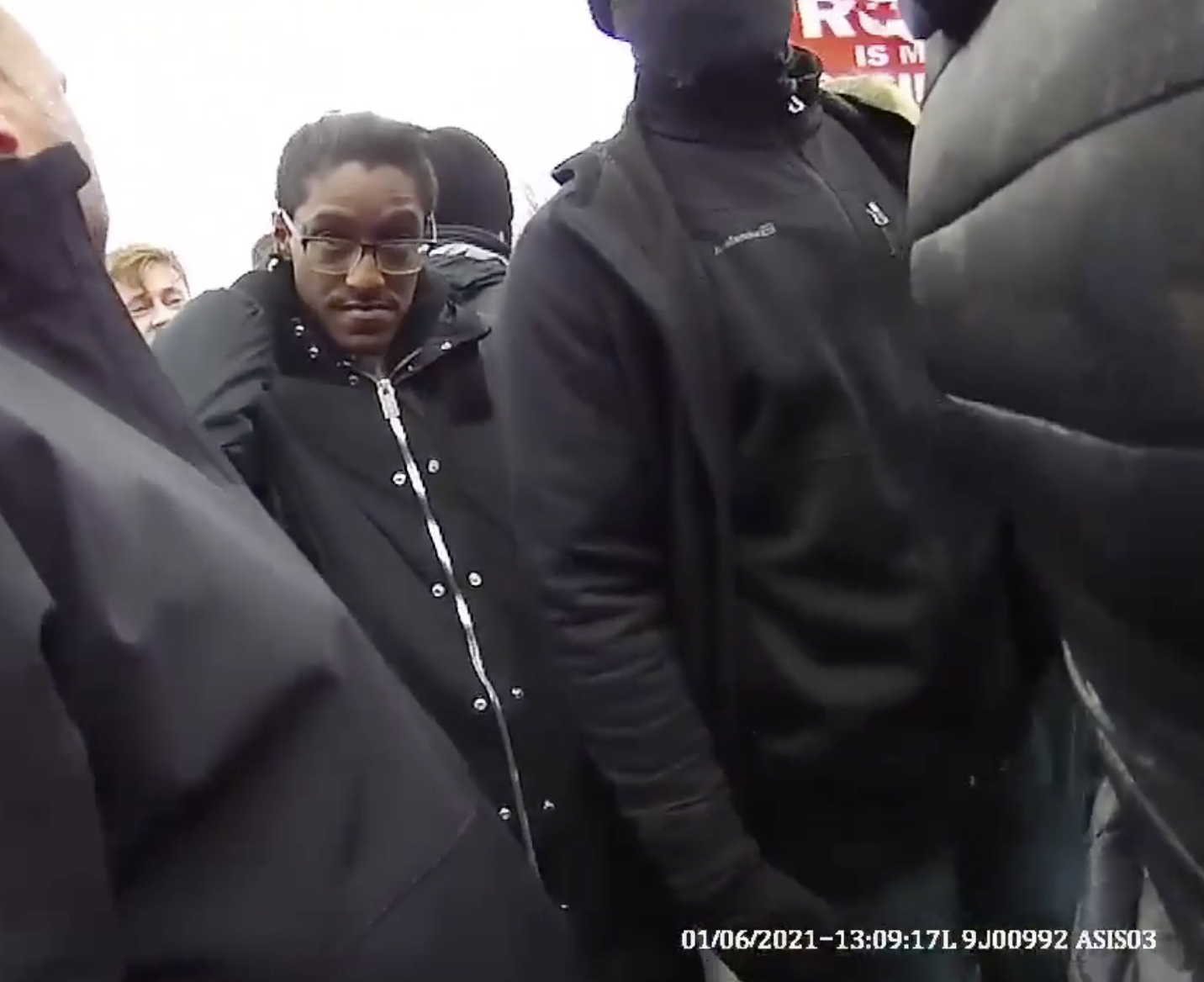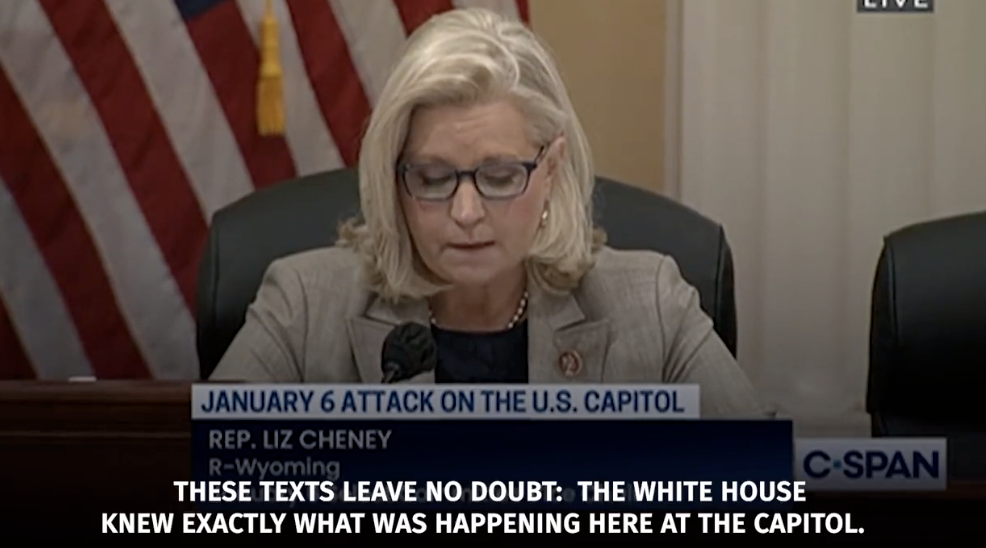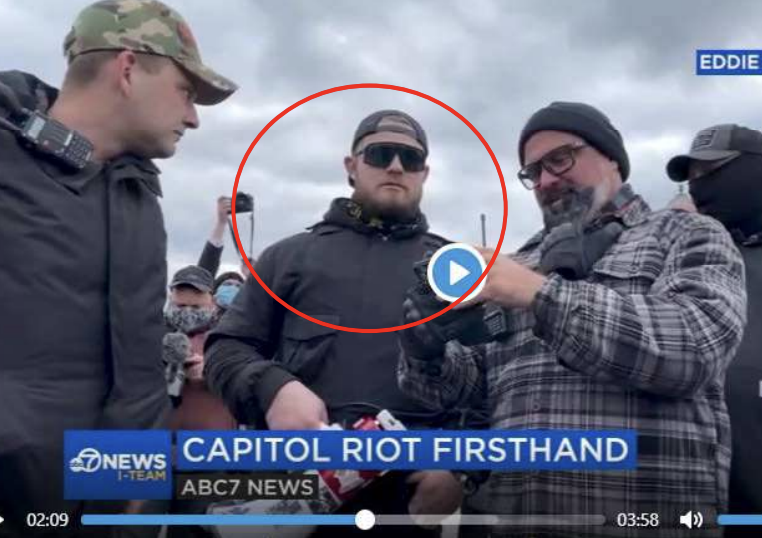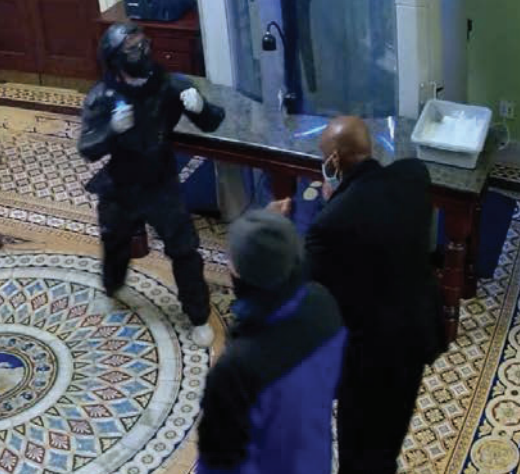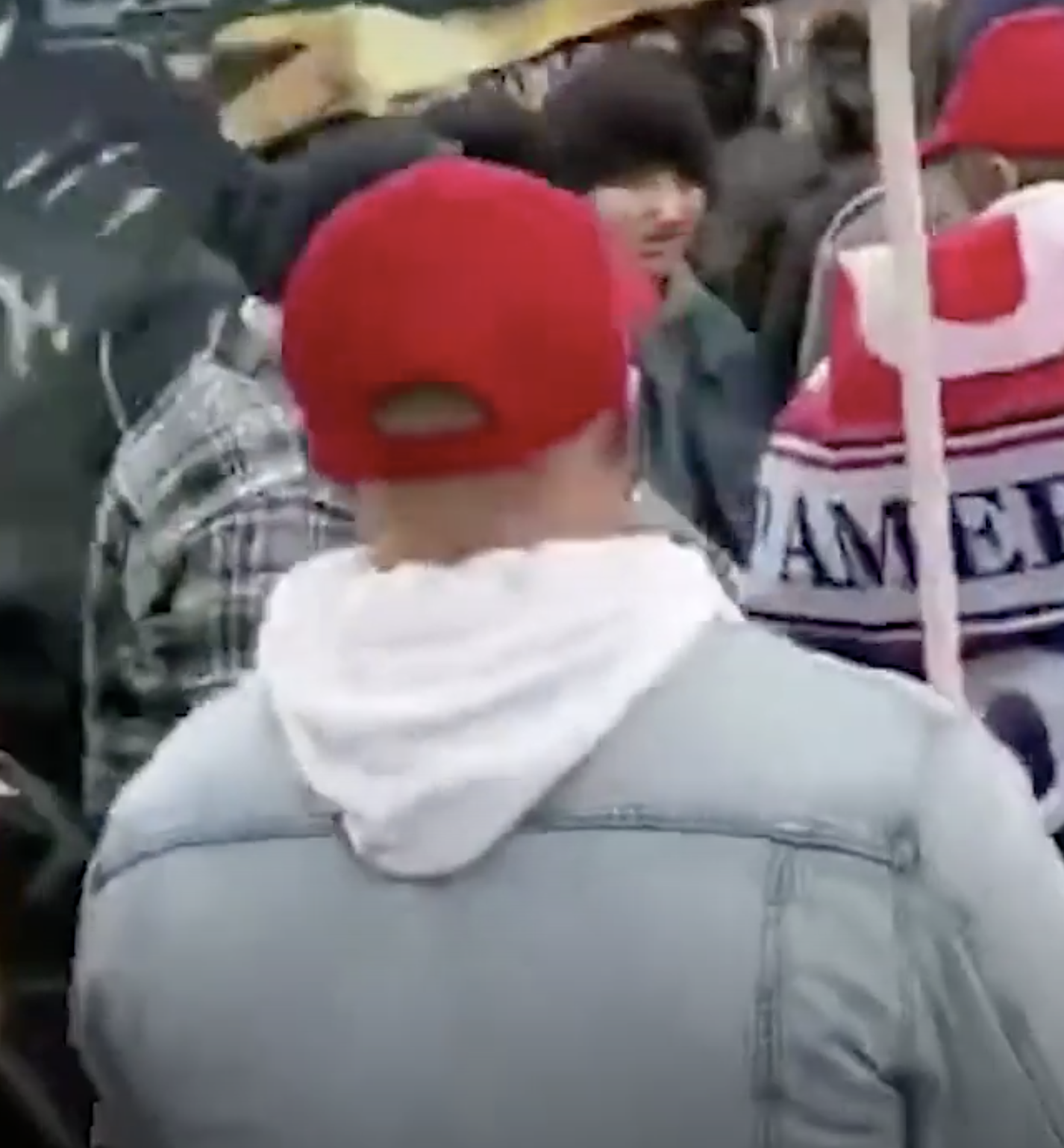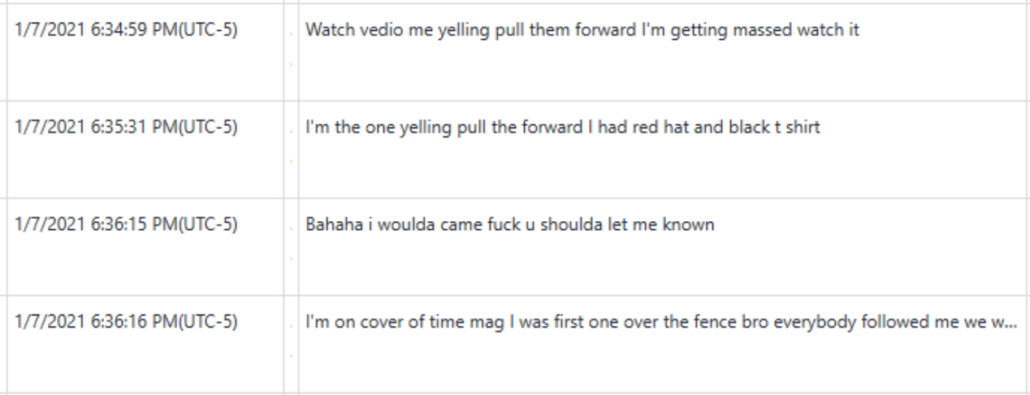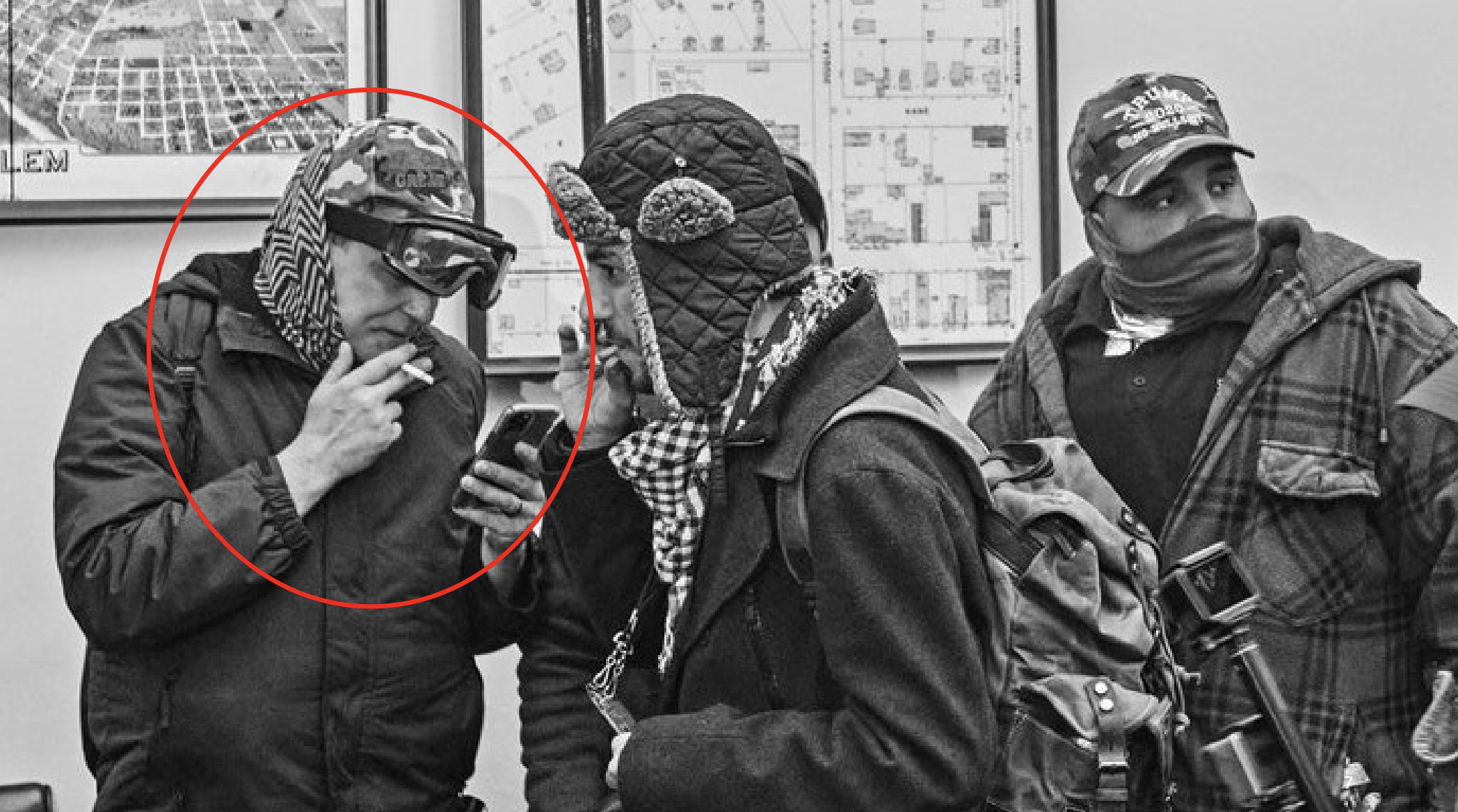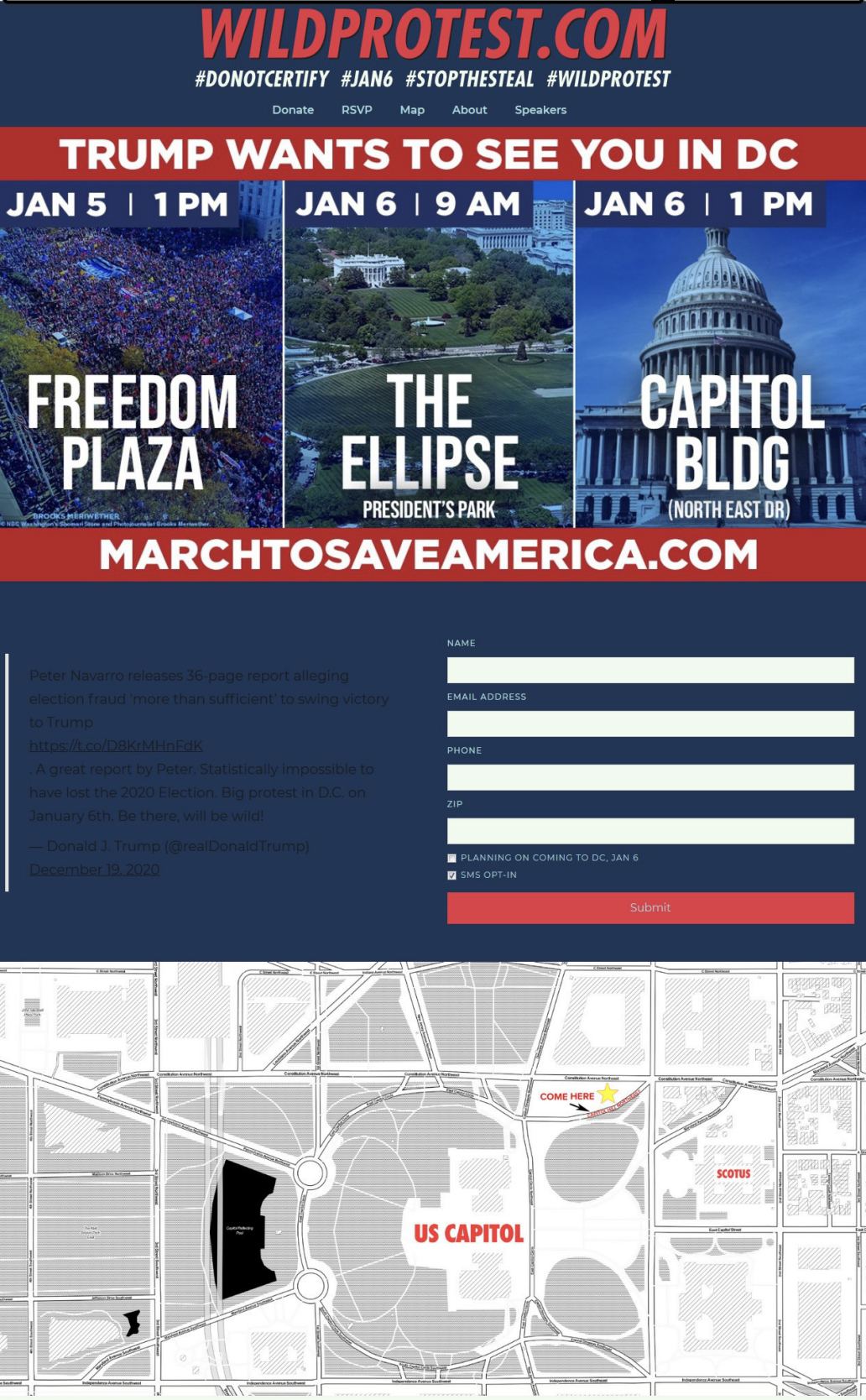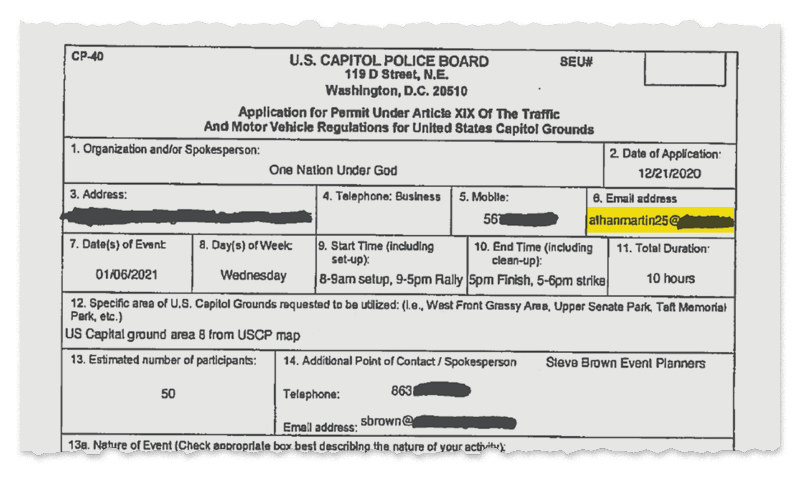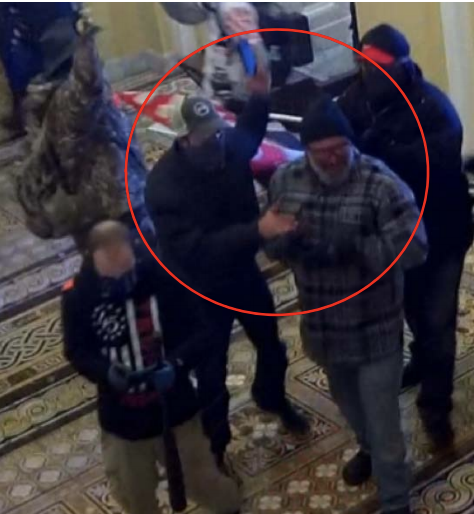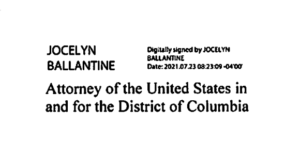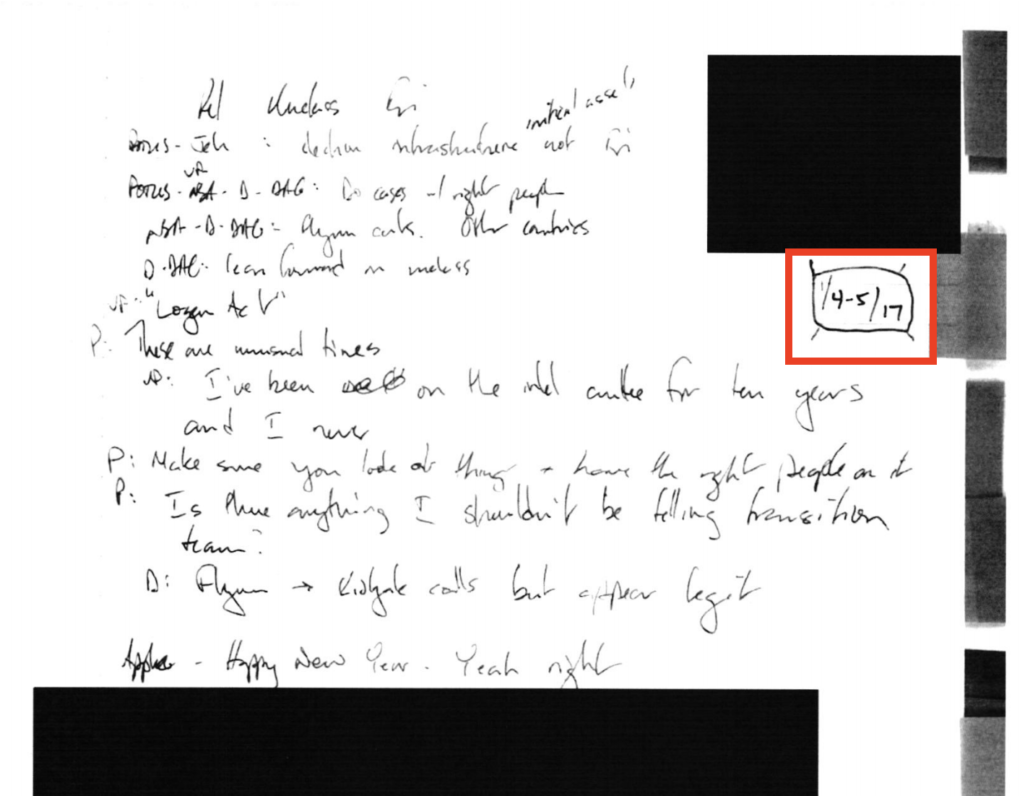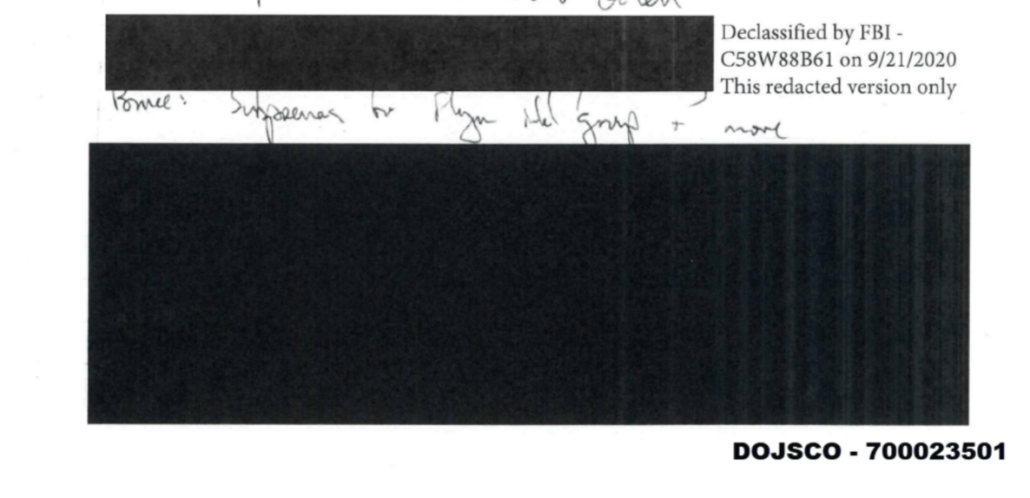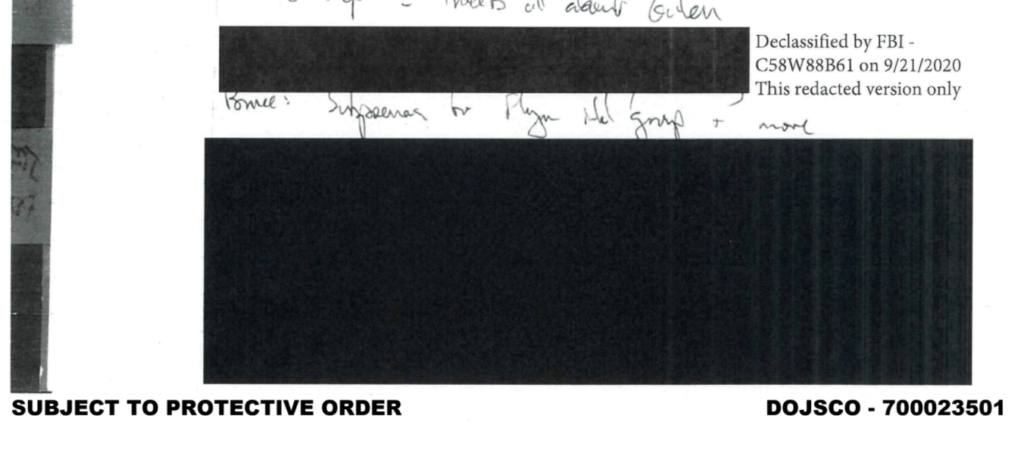I have written — a lot — about the application of obstruction (18 USC 1512(c)(2)) at the heart of the way DOJ has approached the January 6 prosecution. (July; July; August; August; September; September; December; December)
The government has, thus far, chosen not to charge January 6ers with Seditious Conspiracy (18 USC 2384), a crime which carries a sentence of 20 years but requires the government show specific intent to overthrow the government. DOJ has a history of spectacular failure when trying to charge white terrorists with sedition, in part because the bar to proving the elements of the offense is quite high, and in part because white terrorists have long known how to package their extremism in heroic terms. Sedition would be particularly hard to prove with regards to January 6, since it was an attack launched by one branch of government on another.
Instead, the government has charged those Jan6ers against whom they had solid evidence of a specific intent to stop the vote certification with obstruction of an official proceeding under 18 USC 1512(c)(2). Like sedition, that crime can carry a 20 year sentence. But the base offense carries a range closer to 18 months (or the eight months to which Paul Hodgkins was sentenced). To get to stiffer sentences, DOJ would have to demonstrate any of a number of exacerbating behaviors, most notably, the threat of violence or an attempt to assassinate someone, but also destruction of evidence. That’s how DOJ got to very different guideline ranges for five men, all of whom pled guilty to the same obstruction offense:
That is, using obstruction offers the possibility of the same sentence as sedition for the more serious perpetrators, without the same political blowback and legal risk, while giving DOJ more flexibility in punishing different kinds of actions that day as felonies.
Only, using obstruction in this fashion is without precedent, in part because no one has ever tried to prevent the vote certification by violently attacking the Capitol before.
Because of that, January 6 defense attorneys have launched a concerted legal attack on the application, variously claiming:
- This application of obstruction can’t be applied to the vote certification because 18 USC 1512(c)(2) is limited to those proceedings for which there is some kind investigation and adjudication of evidence (like an impeachment)
- If DOJ wanted to charge obstruction, they should have used some other part of the law (that didn’t carry a potential 20 year sentence)
- A recent Supreme Court ruling in Yates v United States that ruled fish could not be evidence of obstruction, which pivoted largely on grammar and conjunctions, would apply to using a mob to stop a vote certification
- January 6 rioters had no way of knowing that the vote certification counted as an official proceeding the obstruction of which would carry a felony charge
- The same confusion about what “corruptly” means that saved John Poindexter exists here
Yesterday, Judge Dabney Friedrich denied Ronnie Sandlin and Nate DeGrave’s motion to dismiss their conspiracy to obstruct and obstruction charges. The opinion is succinct, step-by-step dismissal of each of those challenges (I’ve put the bullets above in the order she addresses them to make it easier to read along).
There are three other major efforts (by Brady Knowlton before Randolph Moss, by Proud Boy Ethan Nordean before Tim Kelly, by Thomas Caldwell before Amit Mehta in the Oath Keeper case) and a slew of other more minor efforts to overturn this application. So the viability of this application of obstruction is by no means a done deal. If any of those other judges ruled against the government, it would set off interlocutory appeals that could upend this decision.
But one judge, at least, has now sanctioned DOJ’s novel application, at least as used with these two defendants.
It’s significant that Friedrich has ruled against this motion (she’s facing a similar one from 3%er Guy Reffitt), for a number of reasons. That’s true, for one, because she’s one of four Trump appointees in the DC District. While all four are (unlike some Trump appointees on the DC Circuit or Supreme Court) quite serious judges, Friedrich is, with Trevor McFadden, one of the judges who might be more sympathetic to the Trump-supporting defendants before her.
Friedrich had also raised questions as to why DOJ hadn’t used a different clause of the obstruction statute, 1512(d)(1) that might also apply to January 6, but which carries just a three year sentence. That makes her sustained treatment of how the law works — citing a Scalia opinion that defendants have raised repeatedly — of particular interest, because it’s the question she seemed to have the most doubt about.
Indeed, § 1512(c)(2) is more akin to the omnibus clause in 18 U.S.C. § 15035 than it is to “tangible object” in § 1519. The specific provisions in § 1503 cover actions related to jurors and court officers and the omnibus clause “serves as a catchall, prohibiting persons from endeavoring to influence, obstruct, or impede the due administration of justice.” As such, it is “far more general in scope.” United States v. Aguilar, 515 U.S. 593, 598 (1995). The ejusdem generus canon does not apply to limit § 1503’s omnibus clause to acts directed at jurors and court officers, because the clause “is not a general or collective term following a list of specific items.” Aguilar, 515 U.S. at 615 (Scalia, J., concurring in part and dissenting in part) (emphasis omitted). Instead, “it is one of the several distinct and independent prohibitions contained in § 1503 that share only the word ‘Whoever,’ which begins the statute, and the penalty provision that ends it.” Id. So too here.
[snip]
Nor does the plain text of § 1512(c)(2) create “intolerable” surplusage. Aguilar, 515 U.S. at 616 (Scalia, J., concurring in part and dissenting in part). To be sure, interpreting subsection (c)(2) to include any and all obstructive, impeding, or influencing acts creates substantial overlap with the rest of § 1512, and with other provisions in Chapter 73. But the Court does not find that it creates intolerable overlap.
To start, a broad interpretation of § 1512(c)(2) does not entirely subsume numerous provisions with the chapter. For instance, § 1512(a)(1)(C), (a)(2)(C), (b)(3), and (d)(2)–(4) proscribe conduct unrelated to an “official proceeding.” Sections 1503 and 1505 prohibit obstructive acts related to the “due administration of justice” and congressional inquiries or investigations, respectively, which may have no relation to an official proceeding. Section 1513, meanwhile, prohibits retaliatory conduct that occurs after a person participates in an official proceeding. Section 1512(c)(2), on the other hand, concerns obstructive conduct that occurs either before or during such proceedings.
It is true that killing a witness to prevent his testimony at an official proceeding, see § 1512(a)(1)(A), or intimidating a person so that he withholds a record from the proceeding, see § 1512(b)(2)(A), among others, could be charged under § 1512(c)(2). But the fact that there is overlap between § 1512(c)(2) and the rest of § 1512, or other provisions in Chapter 73, is hardly remarkable; “[i]t is not unusual for a particular act to violate more than one criminal statute, and in such situations the Government may proceed under any statute that applies.” Aguilar, 515 U.S. at 616 (Scalia, J., concurring in part and dissenting in part) (internal citations omitted); see also Loughrin, 573 U.S. at 358 n.4.
In the Reffitt case, Friedrich had made DOJ provide a Bill of Particulars to explain how they understand Reffitt to have obstructed the vote certification, which was a different approach than other judges have taken. Moss and Mehta, for example, seem most concerned about limiting principles that distinguish obstruction as charged here from otherwise protected political speech (which also might give them a different basis to reject this application, particularly given that Donovan Crowl attorney Carmen Hernandez has focused on the First Amendment in the Oath Keeper case).
One other factor that makes Friedrich’s quicker decision on this issue (this challenge came before her after all the others I’ve listed as major above) interesting is that her spouse, Matthew Friedrich, was an Enron prosecutor. And — as Judge Friedrich’s opinion makes clear — Congress passed this specific clause in response to lessons learned in Enron.
In 2002, following the collapse of Enron, Congress enacted a new obstruction provision in Section 1102 of the Sarbanes-Oxley Act of 2002, Pub. L. No. 107-204, 116 Stat. 745, 807: “Tampering with a record or otherwise impeding an official proceeding.” It was codified as subsection (c) of a pre-existing statute, 18 U.S.C. § 1512. Section 1512(c), in full, states:
Whoever corruptly—
(1) alters, destroys, mutilates, or conceals a record, document, or other object, or attempts to do so, with the intent to impair the object’s integrity or availability for use in an official proceeding; or
(2) otherwise obstructs, influences, or impedes any official proceeding, or attempts to do so, shall be fined under this title or imprisoned not more than 20 years, or both.
18 U.S.C. § 1512(c)(2).
[snip]
As noted, Congress enacted § 1512(c) as part of the Sarbanes-Oxley Act of 2002 following “Enron’s massive accounting fraud and revelations that the company’s outside auditor, Arthur Andersen LLP, had systematically destroyed potentially incriminating documents.” Yates, 574 U.S. at 535–36. That Congress acted due to concerns about document destruction and the integrity of investigations of corporate criminality does not define the statute’s scope. Statutes often reach beyond the principal evil that animated them. See Oncale v. Sundowner Offshore Servs., Inc., 523 U.S. 75, 79 (1998).
She has personal reason to know this history and the import of the statute well.
Friedrich looked to the Enron history to map how “corruptly” might apply in this case, too.
In considering the meaning of “corruptly” (or wrongfully), courts have drawn a clear distinction between lawful and unlawful conduct. In Arthur Andersen LLP v. United States, 544 U.S. 696 (2005), the Supreme Court explained, in the context of § 1512(b), that “corruptly” is “associated with wrongful, immoral, depraved, or evil.” Id. at 705 (internal quotations omitted).
[snip]
The ordinary meaning of “wrongful,” along with the judicial opinions construing it, identify a core set of conduct against which § 1512(c)(2) may be constitutionally applied—“independently criminal” conduct, North, 910 F.2d at 943 (Silberman, J., concurring in part and dissenting in part) that is “inherently malign,” Arthur Andersen, 544 U.S. at 704, and committed with the intent to obstruct an official proceeding, see Friske, 640 F.3d at 1291–92. “Corruptly” (or wrongfully) also acts to shield those who engage in lawful, innocent conduct—even when done with the intent to obstruct, impede, or influence the official proceeding—from falling within the ambit of § 1512(c)(2). See Arthur Andersen, 544 U.S. at 705–06.
All in all, this was a no-nonsense opinion that didn’t rely on distinct aspects of this case, such as that Sandlin encouraged others in the Senate to look for and seize laptops and papers, the kind of destruction of evidence that makes the question easier.
Her opinion laid out just one limiting factor, though given how DOJ has charged conspiracy to obstruct the vote certification in all the conspiracy cases, an important one. This case was easy, Friedrich suggests, because so much of what else Sandlin and DeGrave are accused was obviously illegal (even moreso than Reffitt, who didn’t enter the building and whose resistance to cops was not charged as assault).
The indictment in this case alleges obstructive acts that fall on the obviously unlawful side of the line. It alleges that the defendants obstructed and impeded the congressional proceeding to certify the election results. Superseding Indictment ¶ 37. And it further alleges that the defendants engaged in advance planning, forcibly breached the Capitol building, assaulted Capitol police officers, and encouraged others to steal laptops and paperwork from the Senate Chamber. Id. ¶¶ 15-33. This alleged conduct is both “independently criminal,” North, 910 F.2d at 943 (Silberman, J., concurring in part and dissenting in part) and “inherently malign,” Arthur Andersen, 544 U.S. at 704. And it was allegedly done with the intent to obstruct the congressional proceeding, see Friske, 640 F.3d at 1291. Assuming that the government can meet its burden at trial, which is appropriate to assume for purposes of this motion, the defendants were sufficiently on notice that they corruptly obstructed, or attempted to obstruct, an official proceeding under § 1512(c)(2).
The Court recognizes that other cases, such as those involving lawful means, see, e.g., Arthur Andersen, 544 U.S. at 703, will present closer questions.14 But the Court need not decide here what constitutes the outer contours of a “corrupt purpose.” Because the indictment alleges that the defendants used obvious criminal means with the intent to obstruct an official proceeding, their conduct falls squarely within the core coverage of “corruptly” as used in § 1512(c)(2). See Edwards, 869 F.3d at 502 (“While the corrupt-persuasion element might raise vagueness questions at the margins, the wrongdoing alleged here falls comfortably within the ambit of the statute.”). The Court will address further refinements of the definition of “corruptly” with jury instructions.
14 As courts have noted, difficult questions arise when lawful means are used with a corrupt purpose and with the intent to obstruct, influence, or impede an official proceeding. See, e.g., United States v. Doss, 630 F.3d 1181, 1189 (9th Cir. 2011); North, 910 F.2d at 943 (Silberman, J., concurring in part and dissenting in part). In Judge Silberman’s view, the purpose inquiry should focus narrowly on whether the defendant “was attempting to secure some advantage for himself or for others than was improper or not in accordance with the legal rights and duties of himself or others.” North, 910 F.2d at 944 (Silberman, J., concurring in part and dissenting in part); see also Aguilar, 515 U.S. at 616 (Scalia, J., concurring in part and dissenting in part) (the “longstanding and well-accepted meaning” of “corruptly” is “[a]n act done with an intent to give some advantage inconsistent with official duty and the rights of others”) (internal quotation marks omitted). See also United States v. Kanchanalak, 37 F. Supp. 2d 1, 4 (D.D.C. 1999) (noting that it may be too vague to require only that a defendant “act[ed] with an improper purpose”). This case, which allegedly involves unlawful means engaged in with the intent to obstruct, does not raise these challenging questions.
Whether Sandlin and DeGrave corruptly attempted to halt the vote count is easy, Friedrich suggests, because they are accused of so much else that was clearly illegal, including both trespassing and assaulting cops. Whether this application of obstruction holds for overt acts that are not, themselves illegal, will be a much harder question, but it was not one before her in this case.
This question is already before other judges though, significantly (for DOJ’s efforts to hold what I’ve termed, “organizer inciters” accountable) in the 3%er SoCal conspiracy. And, as the AUSA dealing with the legal application of all this, James Pearce, responded in yet another challenge to this application of obstruction, it goes to the core of whether this application of obstruction could be used with the former President.
At a hearing on Monday for defendant Garret Miller of Richardson, Texas, [Carl] Nichols made the first move toward a Trump analogy by asking a prosecutor whether the obstruction statute could have been violated by someone who simply “called Vice President Pence to seek to have him adjudge the certification in a particular way.” The judge also asked the prosecutor to assume the person trying to persuade Pence had the “appropriate mens rea,” or guilty mind, to be responsible for a crime.
Nichols made no specific mention of Trump, who appointed him to the bench, but the then-president was publicly and privately pressuring Pence in the days before the fateful Jan. 6 tally to decline to certify Joe Biden’s victory. Trump also enlisted other allies, including attorney John Eastman, to lean on Pence.
An attorney with the Justice Department Criminal Division, James Pearce, initially seemed to dismiss the idea that merely lobbying Pence to refuse to recognize the electoral result would amount to the crime of obstructing or attempting to obstruct an official proceeding.
“I don’t see how that gets you that,” Pearce told the judge.
However, Pearce quickly added that it might well be a crime if the person reaching out to Pence knew the vice president had an obligation under the Constitution to recognize the result.
“If that person does that knowing it is not an available argument [and is] asking the vice president to do something the individual knows is wrongful … one of the definitions of ‘corruptly’ is trying to get someone to violate a legal duty,” Pearce said.
If Trump honestly believed that Mike Pence could blow off the vote certification when he ordered him to do so on January 6, this application of obstruction would be far more problematic, as even DOJ’s expert on this application concedes. But if Trump knew the demand violated the law (or the Constitution), then it would meet the definition of “corruptly” under this application of the statute.
The entire course of the January 6 prosecution has been waiting on these decisions about DOJ’s use of obstruction. And while Friedrich’s opinion does not decide the issue, DOJ has notched one significant opinion in support for the approach they’re using. If a few other judges match her opinion, we could begin to see a wave of plea deals to felony convictions.
Update: Here’s the order Friedrich issued in Reffitt’s case, deferring the 1512 question until trial unless he gives her a good reason not to:
MINUTE ORDER. Before the Court is the defendant’s [38] Motion to Dismiss Count Two of the Indictment on multiple grounds, including that Count Two is unconstitutionally vague as applied. On a motion to dismiss, the Court “is limited to reviewing the face of the indictment,” United States v. Sunia , 643 F. Supp. 2d 51, 60 (D.D.C. 2009), and it must assume the truth of the indictment’s factual allegations, United States v. Bowdoin , 770 F. Supp. 2d 142, 149 (D.D.C. 2011). The question for the Court at this stage of the proceedings is “whether the allegations, if proven, would be sufficient to permit a jury to find that the crimes charged were committed.” Id. at 146.
A criminal statute is not unconstitutionally vague on its face unless it is “impermissibly vague in all of its applications.” Vill. of Hoffman Estates v. Flipside, Hoffman Estates , 455 U.S. 489, 497 (1982). And “[o]ne to whose conduct a statute clearly applies may not successfully challenge it for vagueness.” Parker v. Levy , 417 U.S. 733, 756 (1974). Numerous courts have rejected vagueness challenges the word corruptly as used in obstruction statutes. See, e.g., United States v. Shotts , 145 F.3d 1289, 1300 (11th Cir. 1998); United States v. Edwards, 869 F.3d 490, 50102 (7th Cir. 2017); see also Mem. Op. issued December 10, 2021 in United States v. Sandlin , 21-cr-88, Dkt. 63 (holding that § 1512(c)(2) is not unconstitutionally vague as applied to defendants who allegedly forcibly breached the Capitol and assaulted Capitol police officers with the intent to impede the official proceeding).
In contrast to the indictment at issue in Sandlin, the Indictment in this case does not allege any facts in support of the § 1512(c)(2) charge. Count Two merely alleges that Reffitt “attempted to, and did, corruptly obstruct, influence, and impede an official proceeding, that is a proceeding before Congress, specifically, Congress’s certification of the Electoral College vote as set out in the Twelfth Amendment of the Constitution of the United States and 3 U.S.C. §§ 15-18.” [34] Second Superseding Indictment at 2. The government proffers in its brief, however, that “[w]hile at the Capitol, the defendant, armed with his handgun in a holster on his waist, confronted U.S. Capitol Police officers on the west side stairs, just north of the temporary scaffolding. The defendant charged at the officers, who unsuccessfully tried to repel him with two different types of less-than-lethal projectiles before successfully halting his advances with pepper spray. The defendant encouraged other rioters to charge forward at the officers, which they did. The officers were forced to fall back, the Capitol was invaded.” [40] Gov’t Opp’n at 1. Reffitt disputes this in his briefing. [38] Def.’s Mot. to Dismiss at 13-15.
Because it is unclear, based on the indictment alone, what actions Reffitt allegedly engaged in to obstruct and impede the official proceeding, the Court cannot determine at this early stage of the proceeding whether the charges are unconstitutionally vague as applied to him. For this reason, the Court is inclined to defer ruling on his vagueness challenge until the facts have been established at trial and the jury has had an opportunity to consider that evidence. See United States v. Kettles , No. CR 3:16-00163-1, 2017 WL 2080181, at *3 (M.D. Tenn. May 15, 2017) (finding that pretrial as-applied challenge to § 1591(a) was premature because “[t]he court cannot determine the nature and extent of [defendant’s] conduct in this case and, therefore, also cannot determine whether § 1591(a) is void for vagueness as applied to that conduct”); United States v. Raniere , 384 F. Supp. 3d 282, 320 (E.D.N.Y. 2019).
Accordingly, the defendant is directed to file, on or before December 15, 2021, a supplemental brief of no more than 5 pages in length explaining why the Court should not defer ruling on his motion until the evidence has been presented at trial. Upon review of the defendant’s supplemental brief, the Court will consider whether a response from the government is necessary.
Without question, some idiots and brawlers also showed up who committed criminal acts of brawling with police, apparently initiated violent assaults on police, and reportedly (though counsel has not seen it directly) there were calls before the rally that were for a variety of violent acts that are not peacefully expressing a message under the First Amendment. [all emphasis Moseley’s]

